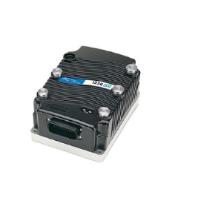 Add My Company
Add My Company
Sign In

Yes, Curtis CANdo.... part 1
Communication standardisation for lift-truck control can seem like wishful thinking. But there is a way for savvy engineers to achieve a common control language for all on board devices from a variety of different sources and manufacturers.
If you can dream it, you can build it.
Although each individual choice may be a smart solution, the resulting mix of devices potentially install conflicting CAN “languages” and entirely different 29-bit CAN protocols such as SAE J1939.
To complicate issues further, some CAN device manufacturers have implemented slightly different versions of these 11-bit or 29-bit profiles to create their own semi proprietary CAN standards.
Engineers are often frustrated that, having selected their ‘ideal’ set of CAN devices, some of them may not communicate with other CAN devices due to these different CAN implementations. This means the designer has to approach each device manufacturer and ask for some modification to be performed. But customisation can be expensive – not only are extra fees charged for the modification, but the non-standard part created often commands a higher purchase price, which negatively impacts the new vehicle’s profitability. What’s more, customisation can lead to delays in the development process and being late to market, allowing competing manufacturers to get there first, can be disastrous for any new vehicle launch.
Sounding familier?
Happily, there is a simple technical solution to the problem of converting different protocols into one common language: just select a VCL-equipped Curtis AC motor controller as the electric traction or hydraulic pump motor controller.
These controllers can be configured to enable a network of CAN devices from different manufacturers - ‘speaking’ different versions of the language – to successfully communicate with each other. Therefore, the Curtis controller acts as an interpreter for devices on the bus, so there is no need for the vehicle developer to request costly modifications from all the other CAN device vendors. A common language brings all the vehicle designer’s ‘first choice’ devices together on the CANbus, made even more simple by using standard inbuilt (VCL) software to configure the CAN data, all of which can be done without assistance from Curtis – although the company’s customer support engineers are on call for advice and assistance with customisation if preferred.
The vehicle designer can make use of this Curtis VCL in two ways: either rely on the proven VCL functions Curtis has predefined, or quickly and easily write proprietary functions and algorithms. Choosing the latter will differentiate the control system from the competition (and in consequence, the functions of the vehicle), with the goal of creating a marketplace advantage.
In part 2, read how conflicting CAN protocols during the design of a bespoke lift truck for handling long loads, were resolved by the advantages that VCL offers.
Submit your preferred email and receive part 2
For more information on How to convert different CAN protocols to a common langauge talk to Curtis Instruments (UK) Ltd
Enquire Now
List your company on FindTheNeedle.

